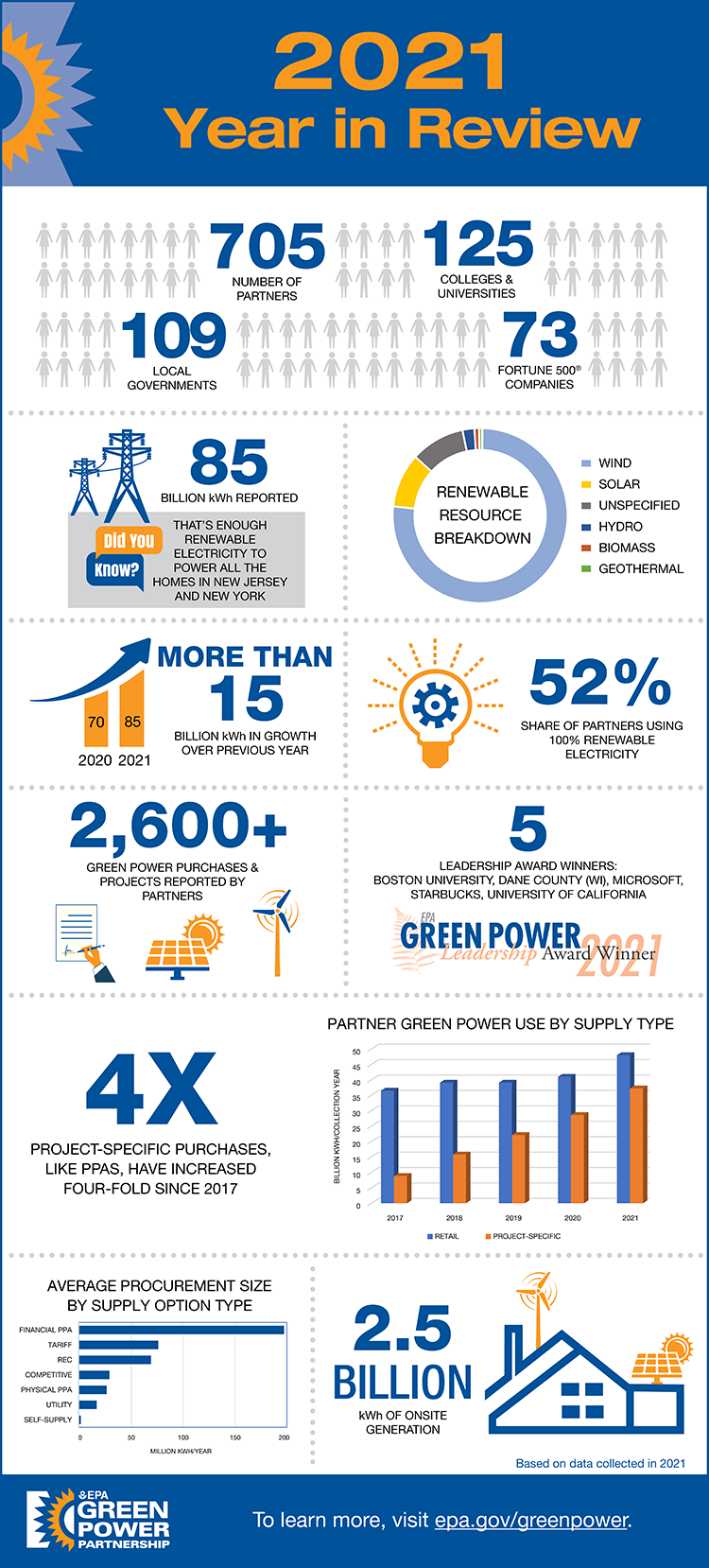Green Power Partnership’s 2022 Year in Review
The EPA GPP has realeased a 2022 year in review graphic and data. Please see the attached graphic.
- EPA Partners reported more than 3,000 green power purchases and projects, up 13 percent over the previous year.
- EPA Partners increasingly engaged directly with new projects through project-specific supply options like PPAs, surpassing retail supply options for the first time in program history.
- Nearly half of all 687 EPA Partners procured enough green power to meet 100 percent of their total annual domestic electricity demand.



